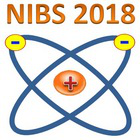Speaker
Mr
Shingo Masaki
(Doshisha University)
Description
Current fusion plasma research requires a high intensity neutral beam of either hydrogen or deuterium to heat the plasma. The intensity of the negative hydrogen (${\rm H^{-}}$) ion current extracted from an ion source chamber depends on both the plasma electrode (PE) surface material and the bias voltage against the plasma potential. The amount of the negative deuterium (${\rm D^{-}}$) ions should exhibit similar dependence for these factors, but with some difference due to the larger mass.
In this study, hydrogen and deuterium plasmas are produced in a cylindrical ion source with 150 mm diameter and 200 mm height. The cylindrical wall is surrounded with 16 rows of plasma confinement magnets. Tungsten and tantalum cathode filaments of 0.5 mm diameter produce the DC discharge plasma and evaporate the vapor to deposit the materials onto the PE surface. An extraction electrode and a Faraday cup are biased at 800 V against the ion source chamber anode. A Langmuir probe located near the PE detects plasma current out of which electron temperature and electron density are determined in the vicinity of the extractor. A DC laser photodetachment coupled to extraction current signal measurement yields information on ${\rm H^{-}}$ and ${\rm D^{-}}$ transport.
Primary authors
Prof.
Katsuyoshi Tsumori
(National Institute for Fusion Science)
Mr
Kenta Maeshiro
(Doshisha University)
Prof.
Motoi Wada
(Doshisha University)
Mr
Shingo Masaki
(Doshisha University)

